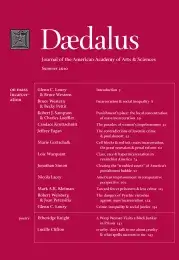The dangers of Pyrrhic victories against mass incarceration
The term “mass incarceration” merits careful scrutiny. It is a dramatic term, spurring political and academic demands that the United States take account of, and seek to reverse, its decades-long commitment to increased imprisonment. The term is justifiably dramatic in two senses. First, the American use of incarceration is, comparatively, an international anomaly and embarrassment. Second, the magnitude of the secondary effects of incarceration in the United States has been so great as to constitute a structural change in our social, economic, and familial life.
But “mass incarceration” is also a melodramatic term, implying some things about American criminal justice that are not entirely true or are flatly untrue. To some, the term may signify conspiratorial governmental control, with fascistic or Stalinist implications. While incarceration in the United States has indeed inflicted horrendous and disproportionate effects on the poor and on minority groups, these harms stem far more from an accumulation of misguided policies –and from negligence or reckless indifference toward these harms–than from any monolithic state strategy of political control. To others, the word mass conveys the sense of an epidemic, with the implication that it is a self-generating or self-reinforcing phenomenon that may run beyond our control. But as discussed below, recent events suggest that the incarceration rate is far more subject to control by very undramatic and mundane changes in policy than the imagery may suggest. Finally, mass suggests numbers that cannot bear any meaningful relationship to the legitimate goals of the criminal justice system. However, no particular measured incarceration rate is inherently unjustified. The question is whether some proportion of our incarceration is unnecessary or is not cost-beneficial. It surely is, but the degree of excess of disproportion is a complex matter to unravel, requiring us to consider the current social and economic context of criminal justice as it has evolved in recent decades, with a healthy respect for the force of path-dependence. Unfortunately, “unnecessary incarceration” or “inefficient incarceration” is not much of a motivating phrase for reform movements.
The evocative power of the term “mass incarceration” is both a virtue and a vice. In this essay, we deliberatively tilt slightly toward the vice side because we fear the unintended consequences of the . . .
